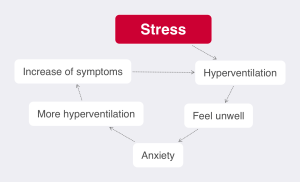Panic Attack’s – What You Need to Know
A panic attack or hyperventilation is a state of breathing faster or deeper than normal.
Healthy breathing is when there is a balance between breathing in and breathing out. Hyperventilation is caused by exhaling more than you inhale. This causes a rapid reduction in carbon dioxide in the body.
These attacks are rare, with most people reporting occurrences of 1 to 2 times in their lifetime. There can be many causes of hyperventilation and common triggers include emotions of stress, anxiety, depression, or anger.
Occasionally, hyperventilation from a panic can be related to a specific phobia, such as a fear of heights, dying, or closed-in spaces (claustrophobia), and often, panic and hyperventilation become a vicious cycle.
The cause of hyperventilation cannot always be determined with sufficient accuracy (especially in the early stages) within the pre-hospital environment. Therefore you should always presume hyperventilation is secondary to hypoxia or another underlying respiratory disorder until proven otherwise.
Hyperventilation may occur secondary to a life-threatening condition such as asthma or anaphylaxis.
 Recognition of hyperventilation
Recognition of hyperventilation
- Previous history of panic attacks or hyperventilation
- The immediate history of an emotional event
- Fast, shallow rate of breathing
- Chest tightness or pain
- Pins and needles/tingling in the hands, face, and around the lip
- Hands in spasm (claws)
First aid for hyperventilation
- Remove the patient from any distressing triggers
- Attempt to control their breathing by ‘coaching’ – get them to copy your breathing pattern
- Assess for any underlying causes: is this asthma or anaphylactic attack
- Obtain medical help if symptoms do not resolve
When to seek treatment for hyperventilation
Hyperventilation can be a serious issue. Symptoms can last 20 to 30 minutes. You should seek treatment for hyperventilation when the following symptoms occur:
- Rapid, deep breathing for the first time
- Hyperventilation that gets worse, even after trying home care options
- Pain
- Fever
- Bleeding
- Feeling anxious, nervous, or tense
- Frequent sighing or yawning
- Pounding and racing heartbeat
- Problems with balance, lightheadedness, or vertigo
- Numbness or tingling in the hands, feet, or around the mouth
- Chest tightness, fullness, pressure, tenderness, or pain

